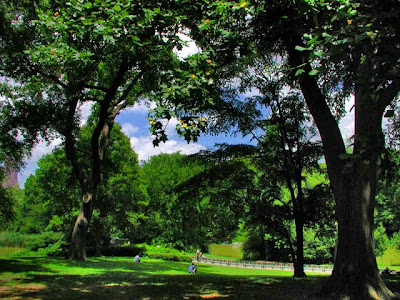Rubus Berry Plants
Tuliptree
Rubus Berry Plants
Tuliptree
Liriodendron is a Genus of two Species of tree in the Magnoliaceae Family, known under the common name Tulip Tree (although it is unrelated to the tulip). Liriodendron tulipifera is native to eastern North America, while Liriodendron chinense is native to China and Vietnam. Both species are large deciduous trees. Various extinct species have been described from the fossil record.
Liriodendron are easily recognized by their leaves, which are distinctive, having four lobes in most cases and a cross-cut notched or straight apex. Leaf size varies from 8–22 cm long and 6–25 cm wide.
The Tulip Tree is a large tree, 18–32 m high and 60–120 cm in diameter. It is trunk columnar, with a long, branch-free bole forming a compact, rather than open, conical crown of slender branches. It has deep roots that are wide spread.
Leaves are slightly larger in L. chinense but with considerable overlap between the species; the petiole is 4–18 cm long. Leaves on young trees tend to be more deeply lobed and larger size than those on mature trees. In autumn, the leaves turn yellow or brown and yellow. Both species grow rapidly in rich, moist soils of temperate climates. They hybridize easily, and the progeny often grow faster than either parent.
Flowers are 3–10 cm in diameter and have nine tepals - three green outer sepals and six inner petals which are yellow-green with an orange flare at the base. They start forming after around 15 years and are superficially similar to a tulip in shape, hence the tree's name. Flowers of L. tulipifera have a faint cucumber odor. The stamens and pistils are arranged spirally around a central spike or gynaecium; the stamens fall off, and the pistils become the Samaras. The Fruit is a cone-like aggregate of samaras 4–9 cm long, each of which has a roughly tetrahedral Seed with one edge attached to the central conical spike and the other edge attached to the wing.
Description
The tulip tree is sometimes called "tulip poplar" or "yellow poplar", and the wood simply "poplar", although unrelated to the genus Populus. The tree is also called canoewood, saddle leaf tree and white wood. The Onondaga tribe calls it Ko-yen-ta-ka-ah-tas (the white tree).Liriodendron are easily recognized by their leaves, which are distinctive, having four lobes in most cases and a cross-cut notched or straight apex. Leaf size varies from 8–22 cm long and 6–25 cm wide.
The Tulip Tree is a large tree, 18–32 m high and 60–120 cm in diameter. It is trunk columnar, with a long, branch-free bole forming a compact, rather than open, conical crown of slender branches. It has deep roots that are wide spread.
Leaves are slightly larger in L. chinense but with considerable overlap between the species; the petiole is 4–18 cm long. Leaves on young trees tend to be more deeply lobed and larger size than those on mature trees. In autumn, the leaves turn yellow or brown and yellow. Both species grow rapidly in rich, moist soils of temperate climates. They hybridize easily, and the progeny often grow faster than either parent.
Flowers are 3–10 cm in diameter and have nine tepals - three green outer sepals and six inner petals which are yellow-green with an orange flare at the base. They start forming after around 15 years and are superficially similar to a tulip in shape, hence the tree's name. Flowers of L. tulipifera have a faint cucumber odor. The stamens and pistils are arranged spirally around a central spike or gynaecium; the stamens fall off, and the pistils become the Samaras. The Fruit is a cone-like aggregate of samaras 4–9 cm long, each of which has a roughly tetrahedral Seed with one edge attached to the central conical spike and the other edge attached to the wing.
Related : Tuliptree From Wikipedia, the free encyclopedia, Rubus Berry Plants











 8:15 AM
8:15 AM
 Goohara
Goohara
















0 ความคิดเห็น:
Post a Comment